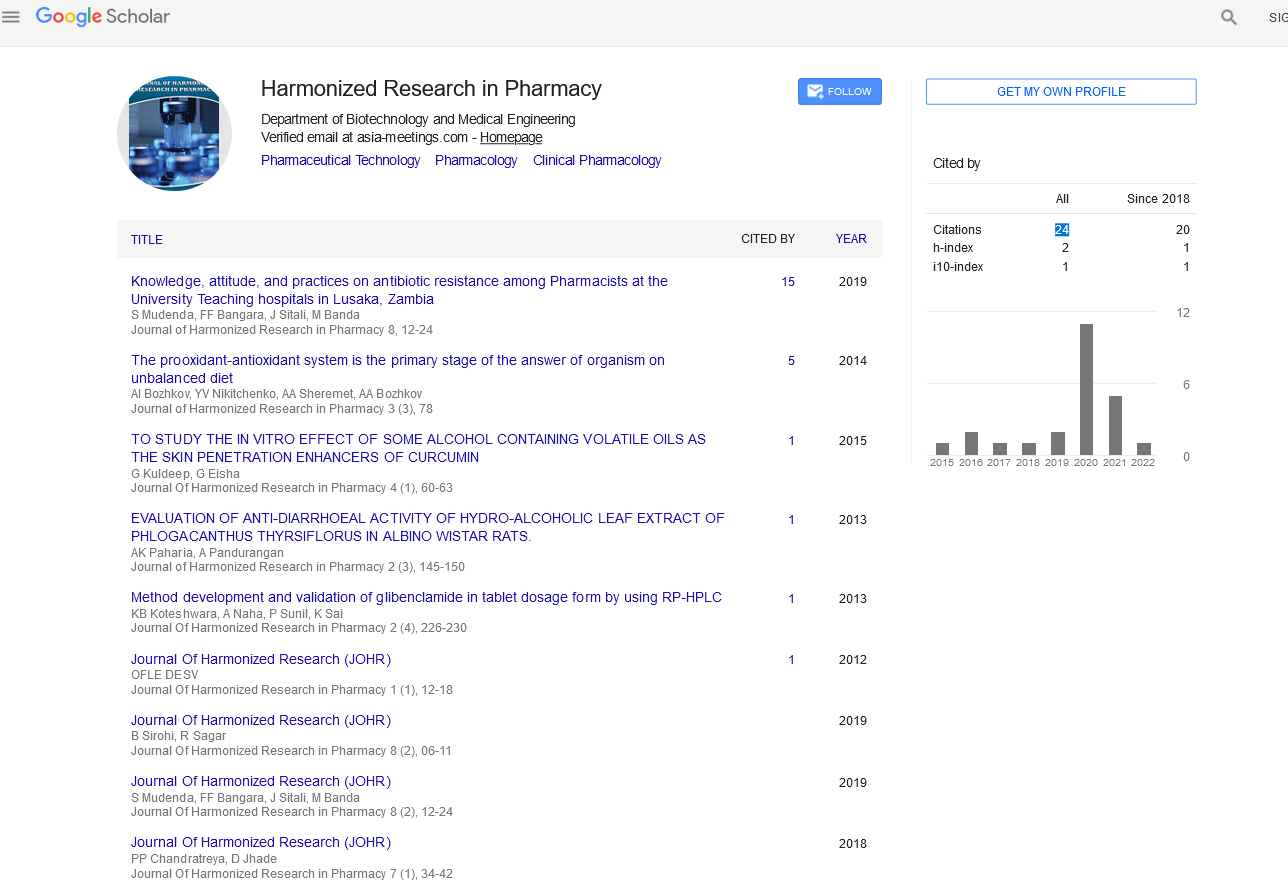SOLUBILITY IMPROVEMENT OF CLOPIDOGREL BISULFATE PREPARED WITH VARIOUS POLYETHYLEN GLYCOL DENSITY AND DIFFERENT KIND OF HYDROXY PROPYL CELULLOSE BY SOLVENT EVAPORATION METHOD
Abstract
Author(s): Yoga Windhu Wardhana, Iyan Sopyan, Fanny Roselia, Augusta Widihastuti
Various strategies have been used for improve drug solubility of poorly water soluble drugs. The aim of this study was to increase solubility dan dissolution rate of Clopidogrel Bisulfate (CLPB) by solid dispersion with various density of Polyethylenglycol (PEG) and some Hydroxypropyl Celullose (HPC) as matrix. As carriers, PEG used in three variation such as PEG 4000, PEG 6000 and mixed both (1:1), meanwhile for HPC used in different kind of specifications such as HPC–SL, HPC–SSL, LHPC–11, LHPC–21. Active ingredient and each of matrices prepared by solvent evaporation method. Despite of solubility and dissolution test, Powder X-Ray Diffraction (PXRD) and Fourier Transform Infrared Spectroscopy (FTIR) used for evaluate interaction between drug and all of carriers. Outcome of this study shown that all of matrices can improve solubility. From the solubility test found that mixed PEG (1 : 1) as the highest solubility than each of PEGs used. Whereas from all of kind of HPC found that only HPC-SL which gave the highest solubility.At only the most solubility improvement from different kind of those matrix was evaluate for dissolution test. The dissolution result exhibited that mixed PEG (1:1) was reach the highest concentration at the same time (60 minutes) from the test. From FTIR spectrums and PXRD difractograms shown that all of matrices changed drug nature. The most distinguish nature of drug displayed by HPC-SL difractogram where all of drug crystallinity alters to amorphous characteristic suit to HPC-SL patterns. Keywords : Clopidogrel bisulfate, Polyethylen glycol, Hydroxypropyl celullose, Solid dispersions, Solubility, Dissolution rate.

Google Scholar citation report
Citations : 147
Journal of Harmonized Research in Pharmacy received 147 citations as per google scholar report









